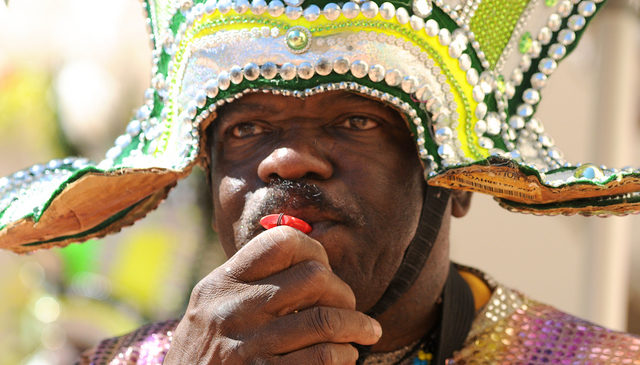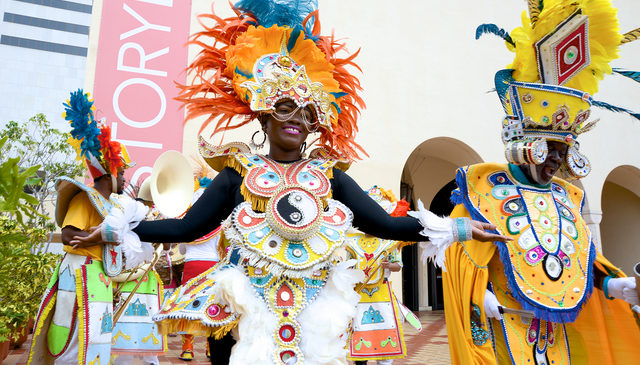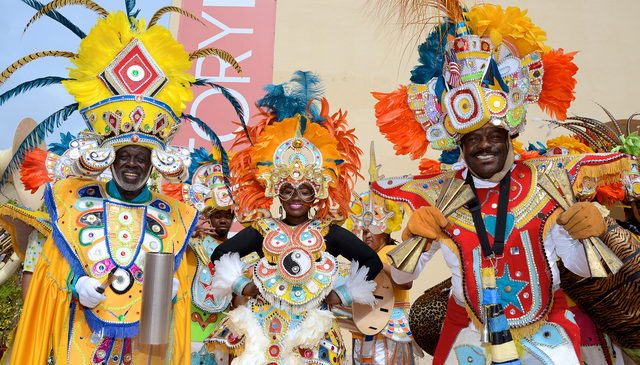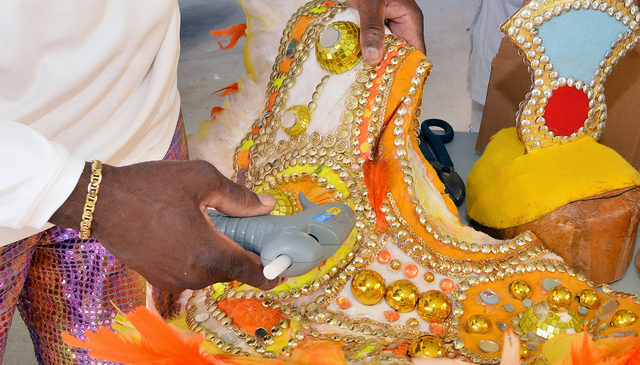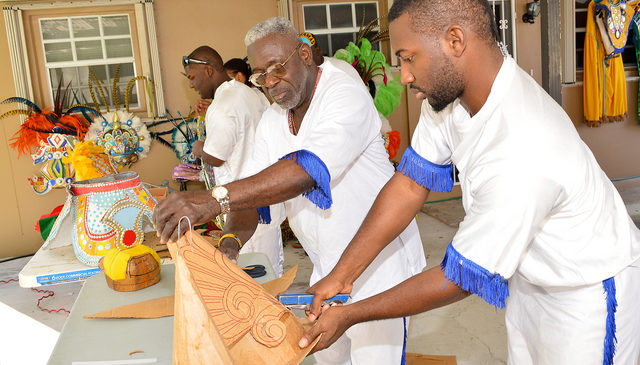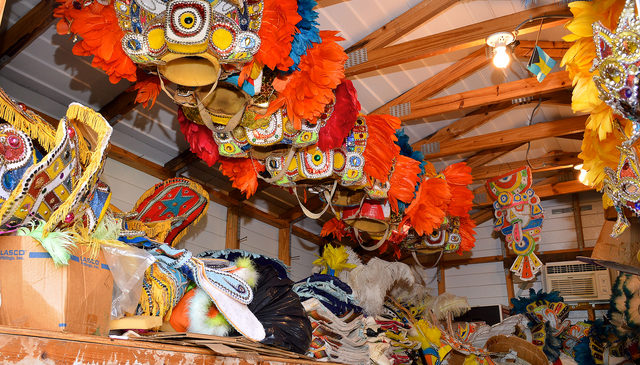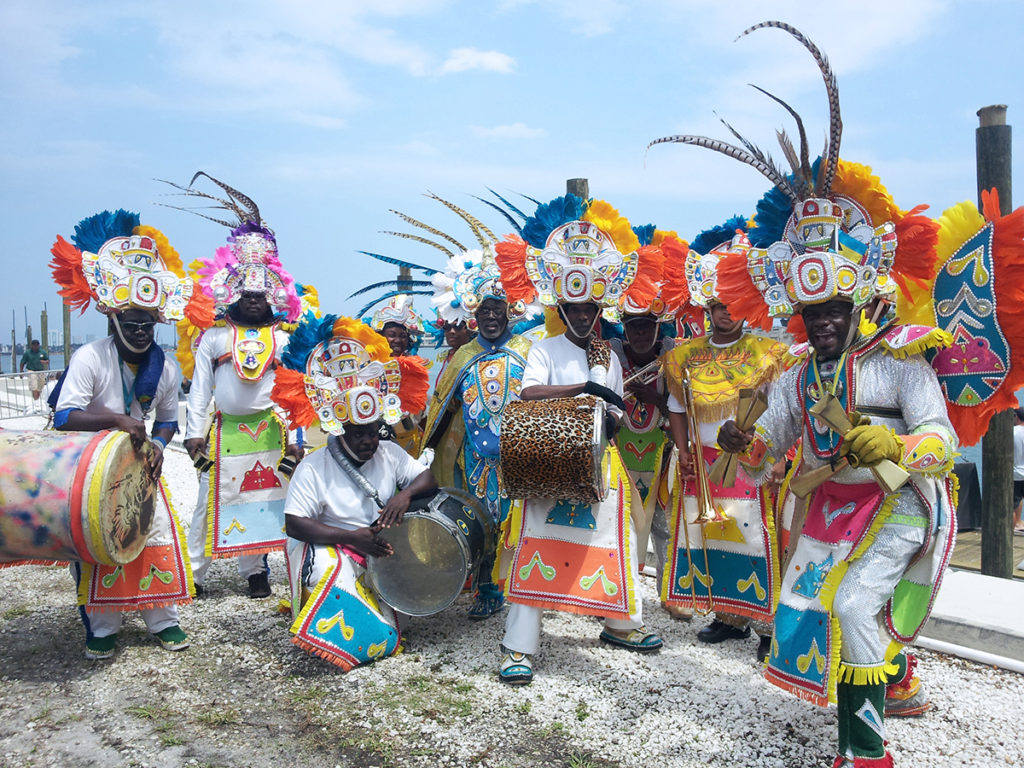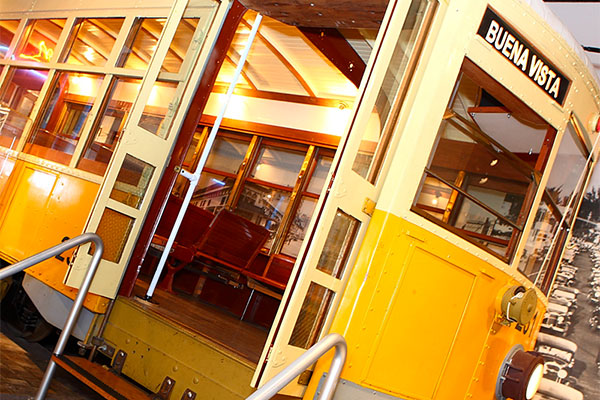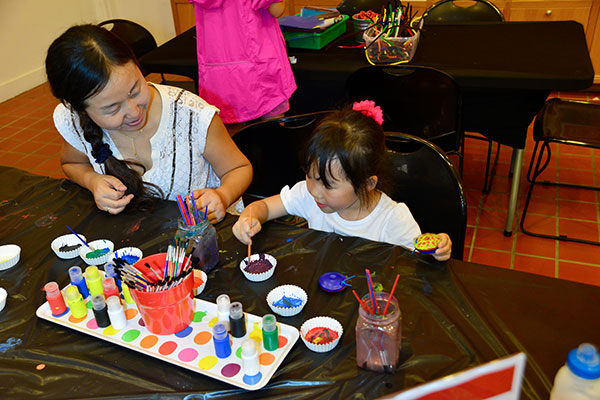Based in South Florida, Bahamas Junkanoo Revue practices junkanoo, a Bahamian parade tradition that occurs on Boxing Day (December 26) and New Year’s Day. The group’s year-round performances feature handmade costumes, dancing, and music made by drums, cowbells, whistles, and brass instruments. In 2009, ensemble leader Langston Longley received the Florida Folk Heritage Award, our state’s most prestigious award for traditional artists.

More about Bahamas Junkanoo Revue
(The following is from an interview HistoryMiami conducted with Langston Longley in 2014.)
Tell us about the Bahamian community in South Florida.
The Bahamian community in Miami is no longer located in one place. It is commonly known that Bahamians were some of the first pioneers in the development of South Florida. Today, descendants of Bahamians hold very prestigious positions in government, business, the clergy, and technology. They generally attend church, and dine at restaurants that serve predominantly Bahamian customers.
Why did you start the Bahamas Junkanoo Revue? Tell us about the history of the group.
The Bahamas Junkanoo Revue was founded in 1993. Its founders include Clinton Neilly and myself. We were born in the Bahamas and, to this day, we go home every chance we get to participate in Junkanoo Rush Out. We reached the conclusion that we can raise the standard of the costuming, music, and the public image of Junkanoo in Florida, and formed a for profit corporation.
What is Junkanoo? Who performs it? When and where is it performed?
Junkanoo is the national festival of the Bahamas that was started by slaves who came to the Islands during the 16th century. Saying the word “Junkanoo” to most Bahamians gets their hearts beating faster and their breathing gets shorter and faster. It’s hard to express in words because it’s a feeling, a spirit that’s evoked within from the sound of a goat skin drum, a cow bell, or a bugle.
Traditionally, Junkanoo celebrations were limited to Boxing Day (the day after Christmas) and New Years Day. However, today Bahamians and friends of the Bahamas make Junkanoo a part of everyday celebrations, year round.
The art of Junkanoo costumes and instrument making is now taught in public and private schools, with annual Junior Junkanoo costume parades in early December. About ¼ of Junkanoo participants today are female.
How did you learn the tradition?
Being born in the Bahamas and living in the inner-city in Nassau (Over the Hill), we were exposed to its infectious rhythm from birth. Most of us had relatives who participated. We had few store-bought toys, so as kids we would make our instruments. We made drums from empty gallon powdered milk cans and used plastic table cloths as skins, fastened on by strips of rubber cut from old bicycle tubes. Cowbells were made from small empty cans half-filled with stones, and then mashed in at the open end, or we would use a shaker from the Poinsettia tree. Whistles or horns were made by blowing across the top of empty bottles. Pre-teen kids from the block would have their own mock parades on a daily basis during the months leading up to the Christmas season.
Tell us about the costumes, including how they are made.
Originally, paraders would use almost any readily available items from around the house or yard: old, colorful clothing, banana leaves, or shirts and pants covered with sponges. Years later (during the 1960s), flower and water would be used to make paste to fasten tissue paper and fringed crepe paper to pants and shirts. Felt is used in the USA instead of crepe paper for the basic background color. In the Bahamas, there are multiple categories of costumes. Many group costumes are made up of cardboard, wire, and plastic rods. The cardboard is painted, outlined, and then dressed by pasting colorful paper beads and jewels to depict a theme. This is a very time consuming and expensive process. Preparation starts from about August and ends in December, with average individual costs of $1,500. Then we fiercely compete for large monetary prizes in groups or individually.
Tell us about the instruments you use.
Traditional Junkanoo musical instruments include drums made from open-ended, wooden or metal barrels covered in goat or sheep skin. Cow skin is used to cover bass drums. A store-bought floor tom is used as the rhythm drum today because skins are not readily available. Cowbells are still homemade by welders. Brass and woodwind instruments are commonly used, as well as black horns and whistles.
What do you all enjoy about practicing this tradition?
Participating in Junkanoo gives you a feeling of release, passion, and pride as you see how observers become mesmerized by its unique sounds. There is a reward in bringing joy to others who may otherwise have a grim day.
There is no end to its creativity in costume making and in learning new music or dance moves. It promotes a spirit of belonging and teamwork towards a common goal.
Is there anything else that you would like to tell us?
Junkanoo is constantly evolving, so don’t be surprised by what you may see or hear next coming from the producers of Junkanoo!

